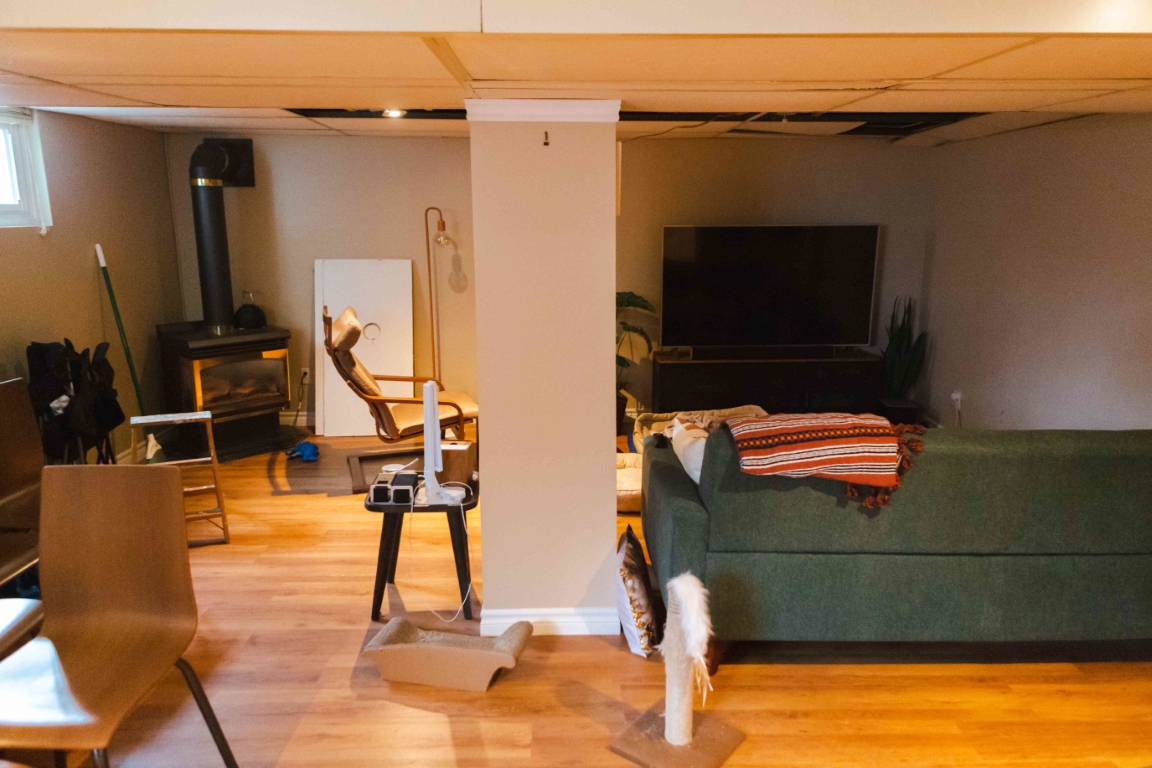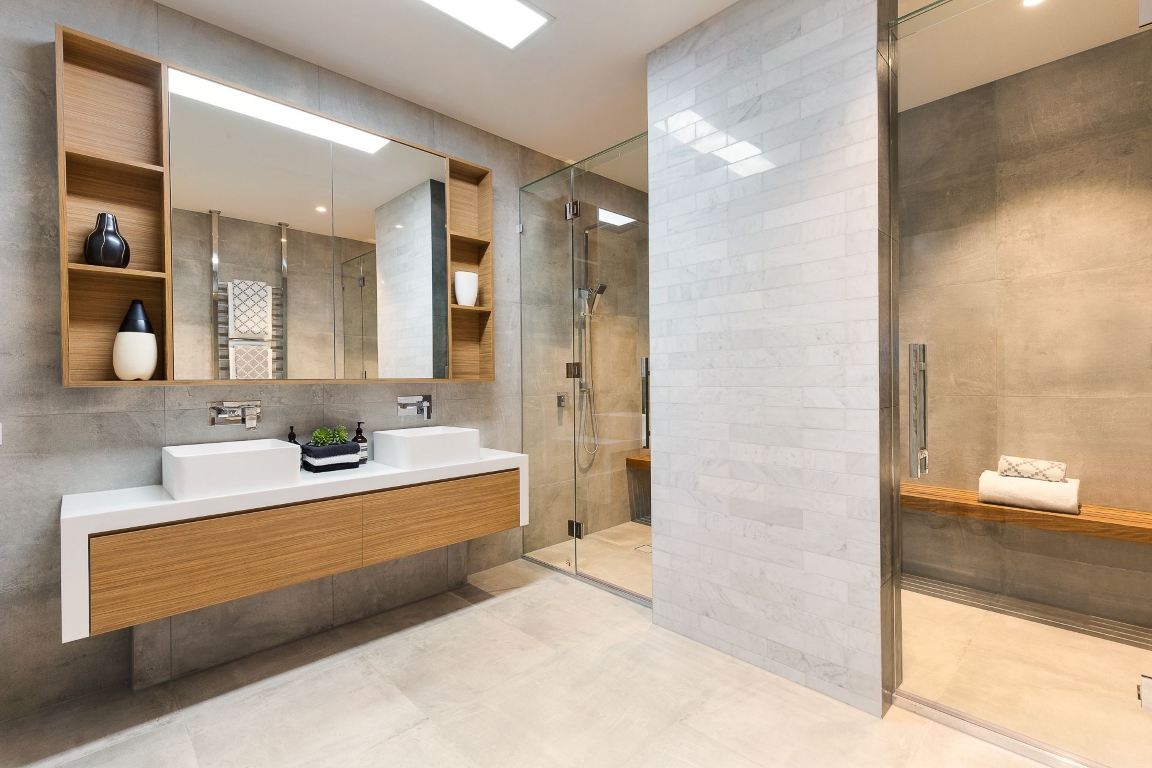While calculating the average bedroom size is difficult, calculating the average size of the national kitchen is straightforward. Of course, the kitchen size will vary depending on the sort of house you live in; a modest cottage will not have the same space as a mansion.
However, the majority of homes are between 1000 and 2000 square feet, with the average being approximately 1500 square feet. But what does this mean for kitchen dimensions? Are kitchens defined by a set amount of space or are they more ambiguous? Let’s see what you can find out!
What Does It Mean to Have a Small Kitchen?
A small kitchen of around 70 square feet was common in homes in the past century, and they may still be seen in certain modern residences.
This tiny kitchen is often seen in small homes, condos, or apartments.

What Qualifies as a Large Kitchen?
On the other hand, a large kitchen is one that is roughly 720 square feet. These are most commonly seen in homes with a total space of at least 4800 square feet.
Residential kitchens like this are regarded as large homes, therefore it’s only natural that their kitchens would be larger as well.

In a house, the average kitchen sizes are
Kitchen sizes are determined by the size of the house. The typical average kitchen size is a little over 100 square feet, based on the average home size of 1500 square feet. A better technique to estimate a kitchen size is to multiply the length by the breadth.
In homes under 1500 square feet, the standard kitchen is roughly 1010 square feet. However, in homes bigger than that, the average kitchen size is around 200 square feet or 1215 square feet. Even in the largest homes, however, a kitchen seldom exceeds 2020 square feet or 400 square feet.
Generally speaking, this is considered the average kitchen size for common homes in the US and is not included around the world. The typical house and kitchen size in other nations differ from that in the United States. Some nations even like to conceal their kitchens behind a wall, similar to a murphy bed.

Dimensions of a Standard Kitchen
The first step in any construction or renovation job is to ascertain the space’s dimensions. The measurement will vary from one household to the next based on a variety of criteria such as the size of your home, whether you’re building a new kitchen or remodeling an old one, and the style you choose.
According to the United States Census Bureau, the average home size is 1500 square feet, but today’s new homes are typically 2600 square feet, with the kitchen taking up around 10% to 15% of that area.

Kitchen Dimensions: Small
Smaller kitchens are typical in smaller residences or apartment kitchens. Objectively speaking, small kitchens have many benefits, not all but they are very close to reality.
In smaller kitchens, space management is more important, thus everything must have its own location; a smaller kitchen also necessitates the use of fewer kitchen equipment and other goods, resulting in less clutter.

The last advantage is that a smaller kitchen requires less room to clean, allowing you to keep your kitchen in tip-top shape.
The size of a popular small kitchen or apartment kitchen usually ranges from 70 square feet or maybe a little less
Kitchen Dimensions: Medium

The size of a mid-sized or medium-sized kitchen is the most similar to that of a regular kitchen. A kitchen of this size may be as large as 100 square feet, and you could accommodate a decent-sized kitchen island on one side with breakfast stools.
When you wish to entertain in your kitchen while you cook, a medium-sized kitchen is ideal for additional room.
When deciding what size kitchen you need, take into account the amount of heavy equipment you have, who will use the kitchen and how many people will use it, the size of your family, and how often you will cook. It’s expected that you’ll be using the kitchen more frequently than normal.
Kitchen Dimensions: Large
Larger kitchens are more common in larger homes, and they are also more commonly what home chefs and bakers desire. It is estimated that the average kitchen size of a typical large kitchen is around 200 square feet. Larger kitchens, especially those with a dining table, a breakfast nook, or a huge pantry, may be more noticeable.
Some of these advantages can be realized with a bigger kitchen. For starters, it has greater storage and can fit larger appliances. This is especially true for larger equipment such as double-door refrigerators, extra freezers, or dishwashers.
More storage is also beneficial for cooks’ space and bakers who need huge quantities of supplies on hand at all times.
A larger kitchen will also provide you with more space and allow you to walk about more freely without unintentionally bumping into things.

Minimum Aisle Width in Kitchen Dimensions
Now we can have a discussion about it. Aisle width is measured in a variety of ways, according to various sources. So, to get to the bottom of this, let’s look at what elements determine the work aisle width you should allow for kitchen tasks.
![]() Whether or whether there is enough room for one or two cooks.
Whether or whether there is enough room for one or two cooks.
![]() Whether or whether a run of units is subject to circulation.
Whether or whether a run of units is subject to circulation.
![]() Cabinets and appliances door swings on both sides of two sets of units facing each other.
Cabinets and appliances door swings on both sides of two sets of units facing each other.

Counter Eating Dimensions in the Kitchen
A kitchen eating counter height is the same as the height of the countertop. As a result, it stands 36 inches tall. We would like to suggest a little for you, if you want to dine comfortably, each person needs a space with a width of about 24 inches of breadth and 15 inches of depth.
At the kitchen dining counter, there’s always something else going on, such as perusing the web on your laptop or completing some paperwork or schoolwork. A table for offices should be at least 30 inches deep, with the ‘work area’ portion being 16-20 inches.
It’s only something to consider. If your dining counter is part of a double-depth kitchen island, you’ll almost certainly have extra cook space.

Dimensions of a Kitchen – Bar Eating
The normal bar height for a kitchen eating bar is 42 inches. To dine comfortably, the guidelines state that each person requires a table with a width of 24 inches and a depth of 12 inches.
Remember (as mentioned above in the eating counter section) that you might wish to do other things on your eating bar (laptop, paperwork, homework). Just consider that before you finalize the measurements.

Designing a Kitchen’s Three Main Kitchen Layouts
Refrigeration and dry goods storage should be placed as close as possible to the kitchen’s entrance. The sink should be situated between those two purposes, with the cooking area facing the eating areas.
A work triangle is formed as a result of this kitchen layout. Less than 21 linear feet is the ideal kitchen triangle (6.4 meters). Moving from one function to another is wasteful in most circumstances when the kitchen triangle is longer than 26 feet (7.9 meters).

Kitchen layout of Storage
Refrigeration and dry-goods storage should be placed near the kitchen entrance, according to designers. It’s a good idea to put your pantry on one side and a 15 to 24 inch (38 to 61 centimeter) countertops on the other. This will make placing items that have been retrieved from the freezer and refrigerator much easier.

Kitchen layout of Preparation area
The kitchen layout of the preparation area and cleaning area should ideally be positioned around the sink. Everyday glasses and dishes, as well as trash cans and the dishwasher, will be located in this living room area. On one or both sides of your sink, allow 18 to 36 inches of countertop space.

Kitchen layout of Cooking
All appliances should all be in the middle of the kitchen. Stoves and ovens should be near pots, baking sheets, and frying pans. It’s also a good idea to keep small appliances like toasters and coffeemakers in this cooking area since this will free up your prep kitchen space.
On either side of your stove, leave 21 to 36 inches of counter space. If at all feasible, install wall ovens next to a free countertop so that you can easily set down hot food. Seasonings, breadboards, and potholders should all be stored in adjoining drawers and upper cabinets or base cabinets. Serveware should face the cooking area.

Single row galley kitchen
Single row galley kitchen layouts save space by combining kitchen fixtures into a single, streamlined linear bar. Single row galley kitchens, like two-row galley kitchens, necessitate a separate zone for user access.
To enable adequate access to the cooking equipment, a clearance width of 4′-6′ (1.2-1.8 m) should be given in front of a Single Row Galley Kitchen. Single row galley kitchens have linear lengths ranging from 7′-12.5′ (2.1-3.8 m) and should have a total space of about 75 ft2 (7 m2).

Clearances for appliances, fixtures, and work areas
There are a variety of kitchen design recommendations that indicate how much room should be allowed around the range, oven, refrigerator, preparation area, and sink in terms of kitchen measurements.
Using the kitchen triangle measurements principles to disperse the areas and appliances around the kitchen, you should be able to create appropriate landing areas around all of the major appliances. It’s probable that all of these criteria won’t fit in a small space.

Clearances in Sink
On one side of the main sink, there should be 36 inches and on the other side, there should be 18 inches.
The 18-inch side may be used as a draining board in the sink.
If you have a tiny kitchen, a drying rack over the sink instead of a landing area to the side for drying would be a better option.

Dishwasher Clearance and Location
According to several kitchen recommendations, the dishwasher should be located near the sink. This makes sense since it allows all dirty dishes to be gathered at the sink and maybe pre-rinsed before being placed in the dishwasher.
What many other standards overlook is the importance of the dishwasher’s position in relation to the cutlery and crockery storage areas. If you can empty the dishwasher and put the cutlery and most of the crockery away without having to travel too far, that’s a huge plus.

Clearance of the Cooking Surface
We recommend that you use a slightly standard-sized cooking area, which will be approximately 15 inches and 12 inches on either side of the cooking surface.
If you have a kitchen island, what you need to know now is that the kitchen surface should be at least 9 inches wide to be able to cook comfortably.

Final
Ending this “walk” with too many words, we hope you have found yourself the right knowledge for your kitchen.
If you have any questions, please contact us at (026) 258-9103 for the most in-depth and sincere advice.



